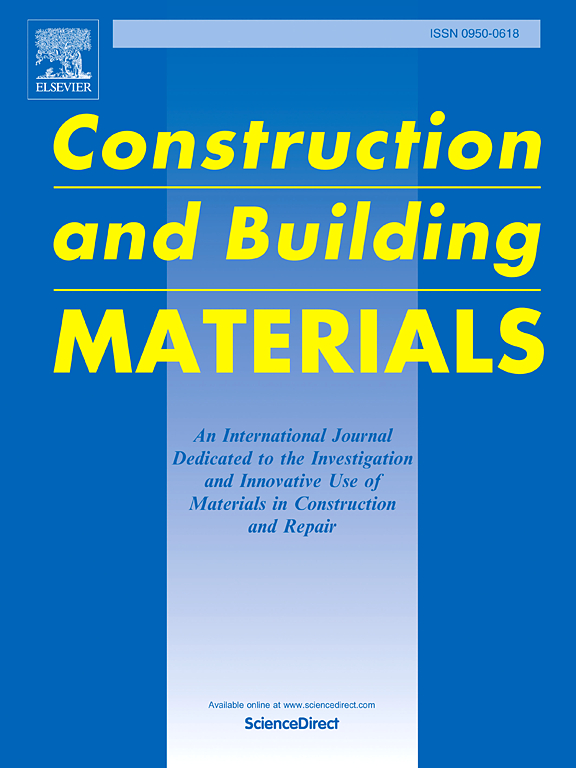Evaluation of the pozzolanic reactivity of volcanic rock powder at different calcination temperatures and the performance of sodium silicate-activated volcanic rock powder geopolymer
IF 7.4
1区 工程技术
Q1 CONSTRUCTION & BUILDING TECHNOLOGY
引用次数: 0
Abstract
This study evaluated the pozzolanic reactivity of volcanic rock powder (VRP) from Xizang, China, calcined at various temperatures. The reactivity was assessed using alkali leaching solubility tests and the R3 method. Results indicate that 700 °C represents the optimal calcination temperature for enhancing VRP reactivity, as it promotes the transformation of quartz and feldspar phases into amorphous phases, significantly improving pozzolanic reactivity. A VRP-based geopolymer was prepared using 700 °C calcined VRP as a precursor and sodium silicate (SS) as an alkali activator. The compressive strength of the resulting mortars was measured, and the hydration process and reaction mechanisms of the SS-activated calcined VRP were investigated by Mercury Intrusion Porosimetry (MIP), X-ray diffraction (XRD), Scanning Electron Microscope (SEM), Isothermal Calorimetry, and Thermogravimetry (TG) analysis. The findings reveal that optimal activation was achieved with an SS modulus of 1.8 and a dosage of 10 %, yielding high early strength and continuous strength development in the later stages, concurrently with the formation of a dense microstructure and a uniform pore size distribution. Furthermore, this research elucidates the critical interplay between the content of chemically bound water and the polymerization degree of N-A-S-H in governing compressive strength, providing a mechanistic understanding of strength development in these geopolymers. These findings not only highlight the potential of Xizang’s VRP as a sustainable precursor for geopolymers but also contribute to the broader understanding of geopolymers.
求助全文
约1分钟内获得全文
求助全文
来源期刊

Construction and Building Materials
工程技术-材料科学:综合
CiteScore
13.80
自引率
21.60%
发文量
3632
审稿时长
82 days
期刊介绍:
Construction and Building Materials offers an international platform for sharing innovative and original research and development in the realm of construction and building materials, along with their practical applications in new projects and repair practices. The journal publishes a diverse array of pioneering research and application papers, detailing laboratory investigations and, to a limited extent, numerical analyses or reports on full-scale projects. Multi-part papers are discouraged.
Additionally, Construction and Building Materials features comprehensive case studies and insightful review articles that contribute to new insights in the field. Our focus is on papers related to construction materials, excluding those on structural engineering, geotechnics, and unbound highway layers. Covered materials and technologies encompass cement, concrete reinforcement, bricks and mortars, additives, corrosion technology, ceramics, timber, steel, polymers, glass fibers, recycled materials, bamboo, rammed earth, non-conventional building materials, bituminous materials, and applications in railway materials.
 求助内容:
求助内容: 应助结果提醒方式:
应助结果提醒方式:


